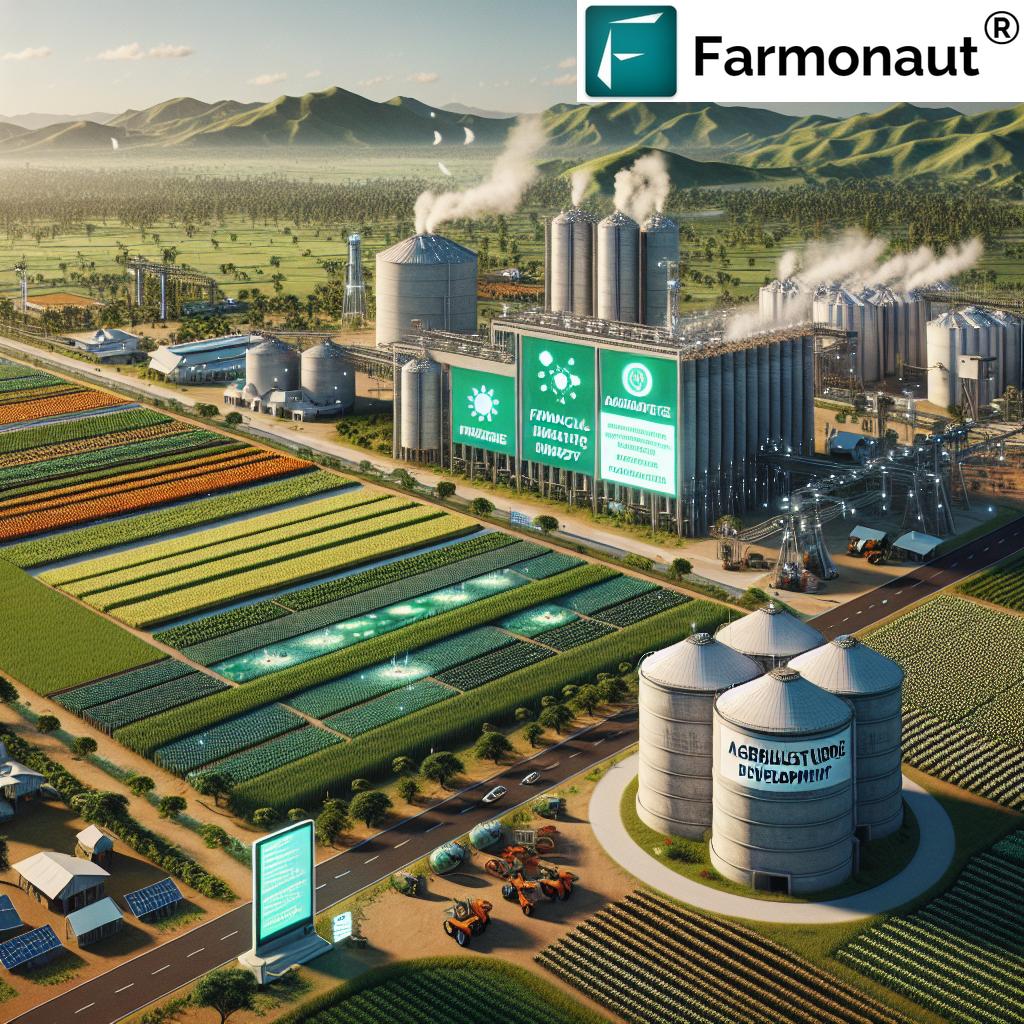Bollworm Complex in Cotton: Meaning in Marathi Guide – A Comprehensive, Innovative Overview for 2025
Introduction: Cotton and the Growing Influence of the Bollworm Complex
Cotton remains one of the most valuable cash crops globally, forming the backbone of the textile industry and providing livelihoods to millions of farmers. As we move into 2025, challenges in sustainable cotton cultivation escalate, primarily driven by pest infestations—among which the bollworm complex in cotton stands out for its persistent destructiveness. This comprehensive overview emphasizes the latest technologies and integrated management practices crucial for understanding and tackling the bollworm complex, especially in vital cotton-producing regions like Maharashtra, India.
“Bollworm infestations can reduce cotton yields by up to 30% without integrated pest management strategies.”
What is Bollworm? Bollworm Meaning in Marathi
Bollworm refers to a group of highly destructive moth larvae (caterpillars) that infest cotton crops and cause significant damage to both yield and fiber quality. When we talk about bollworm meaning in Marathi, the term is translated as “गोळीची किड”. This literally means “a worm that infests cotton bolls,” symbolizing the worm’s destructive habit of burrowing into young, developing cotton bolls and feeding on seeds and lint. Such infestation often leads to reduced yield, poor seed viability, and compromised quality—all major concerns for cotton farmers in India, especially in states like Maharashtra.

(Image: Lifecycle stages of bollworm – key to integrated management. Alt: bollworm complex in cotton.)
The bollworm complex in cotton involves more than just one pest species. This complex, through collective infestation, makes management a serious challenge—requiring multi-pronged, intelligent approaches in the era of evolving agricultural practices, climate unpredictability, and increasing pesticide resistance.
The Bollworm Complex in Cotton Cultivation: Key Species & Their Impacts
The bollworm complex in cotton does not constitute a single pest species; instead, it includes several closely related species that collectively create serious infestation problems for cotton farmers. These species are known to coexist and alternate, making the management of bollworms particularly complicated—especially as resistance against conventional solutions develops.
Primary Bollworm Species in Cotton Cultivation
- American Bollworm (Helicoverpa armigera): Commonly referred to as the cotton bollworm or corn earworm, this highly polyphagous pest attacks multiple crops, but is especially devastating for cotton. Its adaptability across crops and rapid resistance development make it a primary worry for 2025.
- Pink Bollworm (Pectinophora gossypiella): Specifically targets cotton bolls and is notorious for building resistance to pesticides and even genetically engineered (Bt) cotton. Infestation leads to unseen yet significant losses in fiber quality and yield.
- Spotted or Tobacco Bollworm (Earias vittella): Another important pest, this bollworm not only attacks bolls but also feeds on foliage and squares (flower buds), causing poor crop development and opening up the plant to secondary infections.
Other related species sometimes grouped under the bollworm complex include Earias insulana and Helicoverpa zea, but Helicoverpa armigera, Pectinophora gossypiella, and Earias vittella stand out as the most destructive in Indian conditions, particularly in Maharashtra, Telangana, and Gujarat. Their life cycles, destructive stages, and ability to quickly adapt demand robust, innovative management approaches for sustainable yield in 2025 and beyond.
Bollworm Lifecycle in Cotton: Egg, Larval, Pupal, and Adult Stages
Understanding the life cycle of the bollworm complex in cotton is crucial for local pest management and significant in the context of 2025’s evolving climate. The cycle involves four stages:
- Egg: Female moths lay eggs in clusters on cotton plants, especially on tender squares, flower buds, and young bolls.
- Larva (Caterpillar): Upon hatching, the larvae burrow into bolls, feeding on developing seeds, lint, and internal structures—causing maximum physical damage.
- Pupa: Fully fed larvae migrate to the soil (or crop debris) to pupate, reclining in safety as they metamorphose.
- Adult Moth: Emerges to repeat the cycle—each cycle can be completed within 30–40 days, depending on climate and temperature.
The cotton bollworm complex can see multiple generations per season, especially in the warmer, irregular climates of 2025. Early intervention and timely management tied to local temperature and rainfall patterns will be vital for sustainable yield.
Bollworm-Induced Damage: Key Crop Impacts
- Burrowing into bolls causes premature boll shedding.
- Feeding by larvae leads to reduced seed viability and poor lint quality.
- Open wounds in bolls enable secondary fungal or bacterial infections (boll rot), compounding crop losses.
- Repeated infestations can lead to total yield loss of up to 30% in the absence of effective pest management strategies.
New-Age Challenges in Managing the Bollworm Complex in 2025
The management of the bollworm complex in cotton in 2025 faces several emerging and escalating challenges:
- Pesticide Resistance: The overuse or misuse of broad-spectrum pesticides has led to resistance in key species, especially the pink bollworm (pectinophora gossypiella). This resistance makes chemical control methods less effective and pushes for integrated alternatives.
- Changing Climate Patterns: Rising temperatures and erratic rainfall accelerate pest development cycles, leading to more generations within a season. Environmental unpredictability complicates timely interventions.
- Loss of Biodiversity: Non-target impacts of pesticides reduce beneficial predator insect populations and damage soil health—hindering natural pest control.
- Crop Production Costs: As farming inputs increase in cost, efficient resource use and digital management solutions become increasingly important for maintaining profitability.
- Farmer Awareness: Knowledge gaps in advanced, holistic approaches persist, especially concerning biotechnological and digital innovations.
These challenges underscore the need for integrated, tech-driven pest management strategies—making it crucial for cotton farmers to embrace IPM and innovations that are contextualized for local agro-ecological conditions.
Integrated Pest Management (IPM): Advanced Solutions for Bollworm in 2025
In response to persistent bollworm infestation and resistance challenges, the global paradigm in 2025 is shifting towards Integrated Pest Management (IPM). IPM favors smart integration of biological, cultural, genetic, and chemical tools—resulting in sustainable pest management tailored to specific local conditions.
Key Components of IPM for Bollworm Complex in Cotton
- Dense field monitoring: Pheromone traps and consistent field scouting for early detection of the pest. Such data-driven surveillance—now bolstered by AI-powered satellite field analytics—ensures prompt, targeted action before the population explodes.
- Resistant varieties: Deploying genetically improved cotton (Bt or stacked gene cotton) or other local resistant varieties, reducing the need for chemicals and slowing resistance development.
- Biological control: Use of Trichogramma wasps, ladybird beetles, and entomopathogenic fungi. These natural enemies attack bollworm eggs or larvae and help reduce pest populations in an eco-friendly manner.
- Cultural practices: Crop rotation, deep summer ploughing, destruction of previous crop residues, and optimal plant spacing lower the suitability of the fields for the bollworm life cycle, thus decreasing infestation rates.
- Judicious pesticide use: Monitoring and strategic chemical application—targeting the most vulnerable larval stages and reducing off-target impacts—delays resistance buildup.
For farmers in Maharashtra and throughout India, applying IPM with advanced technological support, such as satellite-driven pest risk analysis, real-time recommendations, and digital crop traceability from Farmonaut Large Scale Farm Management solutions, leads to more sustainable cotton production and better market returns in 2025.
Comparative Features Table: Bollworm Management Strategies in Cotton
| Control Method | Estimated Effectiveness (%) | Environmental Impact | Cost Estimate (₹/acre) | Availability in Maharashtra | Notes |
|---|---|---|---|---|---|
| Chemical Pesticides | 60–75% | High | ₹2,500–₹4,000 | Yes | Resistance risk; off-target effects; decreased effectiveness over time. |
| Biological Control | 55–70% | Low | ₹1,500–₹2,800 | Yes (suppliers in region) | Slower action; supports ecological balance; often combined with other methods. |
| Integrated Pest Management (IPM) | 75–90% | Low–Medium | ₹2,200–₹3,500 | Yes | Balanced control; reduced resistance risk; knowledge-intensive. |
| Biotechnological (Bt, RNAi, Stacked Gene) | 80–95% | Low | ₹1,800–₹3,100 (seed premium) | Yes (major seed dealers) | Reduced pesticide use; possible resistance evolution; regulatory compliance needed. |
| Digital Monitoring & AI Advisory | 60–85% (when combined) | Very Low | ₹650–₹1,300 (digital tools/apps) | Yes (via Farmonaut) | Prevents overuse of resources; supports precision timing; complements IPM/biotech. |
Compare efficacy, costs, and ecological impacts to choose the best bollworm complex in cotton management strategies. For local, sustainable options in Maharashtra and India, digital decision support (see below) is increasingly recommended for 2025.
Biotechnological Advances and Digital Innovation for Bollworm Complex in Cotton
To tackle the bollworm complex in cotton and emerging resistance, 2025’s management strategies increasingly integrate:
- Bt and Stacked-Gene Cotton Varieties: Genetically engineered plants express Bacillus thuringiensis proteins, toxic to larvae of Helicoverpa armigera and pink bollworm, reducing dependence on chemical sprays. However, evolving resistance in pink bollworm means crop monitoring remains essential.
- RNA Interference (RNAi) Technology: Next-gen gene silencing techniques target crucial genes in bollworm species, disrupting their growth or survival without environmental harm.
- Digital Tools and AI-Based Advisory Systems: Satellite imaging and digital crop monitoring platforms (like Farmonaut) detect stress due to pest outbreaks earlier than visual scouting, providing farmers with real-time alerts and recommendations. The result: timely action with reduced pesticide use.
- Blockchain-Based Traceability: Digital traceability platforms track cotton bolls from field to factory, supporting residue-free (low pesticide) production—a boost for exports and sensitive markets. Explore Farmonaut Traceability for transparent, secure cotton supply chains.
- AI Predictive Models: Machine learning and AI analyze weather trends, satellite health data, and historical outbreak patterns to predict bollworm risk windows, supporting integrated pest management at scale. Also, access Farmonaut’s Fleet and Resource Management for optimized field operations.
- Smartphone Apps and API Integration: Access real-time monitoring and pest forecasts on mobile (via Android and iOS apps below), or plug Farmonaut’s API directly into your agri-software with API Developer Docs.
These tools put cutting-edge crop monitoring, resource management, and market traceability within the hands of every cotton farmer in 2025. For those seeking to go one step further in reducing greenhouse emissions from robust, sustainable pest management, Farmonaut’s Carbon Footprinting tools offer actionable climate-smart metrics.
Farmonaut Technologies: Raising the Standards of Bollworm Management in Cotton
We at Farmonaut provide advanced satellite-based solutions specifically tailored for cotton cultivation and bollworm complex in cotton management, to make satellite insights both affordable and actionable for every farmer, business, and government user. Our offerings include:
- Multispectral Satellite Monitoring of cotton fields—detect crop health (NDVI), spot early symptoms of pest infestation, and receive timely, geo-referenced alerts for localized management.
- AI Advisory (Jeevn AI)—analyzes satellite-derived data to deliver personalized crop protection and weather insights, optimizing every farming decision for sustainable yield.
- Blockchain Traceability—ensures supply chain integrity, building consumer confidence in pesticide-residue-free cotton.
- Fleet and Resource Management—enables farm managers to monitor field machinery, ensure timely spraying, and minimize operational costs.
- Environmental Impact Tracking—monitors carbon footprint and overall sustainability, vital for export markets and compliance.
Farmonaut’s modular, scalable platform is accessible on mobile/wireless devices, browser/web apps, APIs, Android, and iOS—making bollworm complex in cotton management truly digital, proactive, and farmer-friendly for the 2025 era.
“Over 50% of Indian cotton farmers now use biotechnological tools to monitor and manage bollworm resistance.”
Expert Video Resources: Mastering Bollworm Complex in Cotton Management
- Cotton defence Mastery: Understanding Bollworm Types and Pink Bollworm Life Cycle for Farmers
- Indian Cotton Farming: From Plantation to Harvest – A Comprehensive Guide
- Cotton Cultivation Challenges: Overcoming Production Hurdles for Better Yields
- Mapping of Cotton in Maharashtra: Regional Agricultural Insights
- Cotton Farming, Climate & Technology: Climate, Technology, and Surprising Facts
- Satellites & AI: How Satellites and AI are Changing the Game
- Farmonaut Explained: Satellite-Based Crop Health Monitoring
- AI-Powered Field Scouting: Enhanced Productivity
Frequently Asked Questions (FAQ) – Bollworm Complex in Cotton: Meaning in Marathi Guide
What is the bollworm complex in cotton?
The bollworm complex in cotton refers to a group of closely related moth larvae (including Helicoverpa armigera, Pectinophora gossypiella, and Earias vittella) that collectively infest and damage cotton bolls, causing significant yield and quality losses.
What is bollworm called in Marathi?
Bollworm in Marathi is “गोळीची किड”, which literally translates to “the worm of the cotton boll”.
How does the bollworm complex cause damage to cotton crops?
Larvae burrow into bolls, feeding on seeds and lint, causing premature boll shedding, reduced seed viability, poor lint quality, and opening the crop to secondary infections (boll rot).
What are the main IPM strategies for bollworm management in cotton?
Integrated Pest Management (IPM) includes dense field monitoring (traps, scouting), planting resistant cotton varieties, deploying biological controls, crop rotation and sanitation measures, and judicious, targeted use of pesticides. Digital and AI-based advisories (like those from Farmonaut) are increasingly crucial in 2025.
Why is resistance a major problem with chemical control of the bollworm complex?
Bollworms can quickly develop resistance to commonly used pesticides when these are repeatedly or improperly applied. Pink bollworm is particularly notorious for high resistance, which can render chemical sprays ineffective over time and necessitates more sustainable, integrated approaches.
How does climate change impact bollworm management in 2025?
Warmer temperatures and unpredictable rainfall increase bollworm generations per season and shift pest population dynamics. This requires adaptive, real-time management—supported by digital monitoring tools—to prevent widespread crop losses.
Can satellites and AI actually help in bollworm complex management?
Yes, satellite imagery and AI-driven advisory systems provide early detection of crop stress, identify emerging pest outbreaks, and deliver tailored recommendations—making them vital components for smart, sustainable bollworm management for Indian cotton farmers in 2025.
Is digital traceability important for cotton farmers?
Yes! Blockchain-based traceability (as offered by Farmonaut) increases market value, supports residue-free branding, and meets the requirements of premium buyers/exporters.
How can Farmonaut’s satellite solutions benefit cotton farmers in Maharashtra?
Farmonaut’s real-time monitoring tools, AI-based advisories, and resource management features help Maharashtrian cotton growers detect pest risk, optimize farm operations, and comply with sustainability norms—fostering better profit and long-term resilience against climate and pest challenges.
Where can I find technical guidance to integrate Farmonaut’s API for digital farm monitoring?
Please refer to the Farmonaut API Developer Docs for details on how to integrate satellite data and weather insights with your systems.
Conclusion: Safeguarding Cotton’s Future in 2025 and Beyond
The bollworm complex in cotton remains one of the most destructive pests, persistently challenging modern cotton cultivation. Understanding its biology, the significance of bollworm meaning in Marathi (“गोळीची किड”), and the complex interplay of climate, resistance, and crop management practices is more crucial than ever for both sustainable yield and quality.
As the backbone of the textile industry, cotton farmers in Maharashtra, across India, and globally require integrated, adaptive management approaches. With emerging biotechnological advances (such as RNAi, Bt, and digital traceability tools) and satellite/AIs solutions like those we offer at Farmonaut, the path toward smarter, greener, more resilient cotton production is ready for 2025 and beyond.
By embracing data-driven crop monitoring, eco-friendly pest suppression, and genuine transparency across the value chain, farmers can not only counter the rising threats of the bollworm complex but also enhance their position in premium, residue-free cotton markets. Explore more about Farmonaut Crop Loan & Insurance options to secure farm investments against pest and climate risk in 2025.
The future of cotton in a changing climate and shifting agricultural economy depends upon strategic, sustainable, and innovative bollworm complex management.












